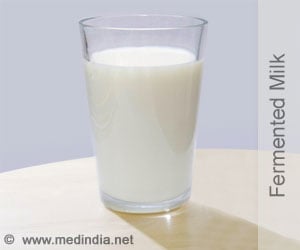- A2 milk could be as effective as lactose-free milk in preventing or reducing some symptoms of lactose intolerance
- It prevents some symptoms of dairy intolerance even though it contains the same amount of lactose as conventional milk
- More than 70 adults are lactose intolerant and experience bloating, nausea, and other unpleasant symptoms
Lactose Intolerance
Milk is a good source of protein, essential vitamins and minerals, but some people are intolerant to it. A majority of the people have lactose intolerance as they are unable to digest dairy products. Lactose is a type of natural sugar found in milk and dairy products. People with lactose intolerance cannot digest the sugar because the small intestine does not make enough lactase, the enzyme which digests lactose. Globally, more than 70 percent of adults consider themselves lactose intolerant, and experience some unpleasant symptoms like bloating, nausea after consuming dairy products.Conventional Milk Vs A2 Milk
A1 and A2 types of beta-casein is a protein which comprises of 25 to 30 percent of total milk protein. Conventional milk contains both the A1 and A2 types. All the cows produced only the A2 protein type, and the A1 mutation appeared 5000 to 10,000 years ago.The research team conducted a study to compare the digestive response to conventional milk, A2 milk, and lactose-free conventional milk. Thirty healthy young women between the ages of 20-30 who had trouble digesting milk participated in the study. The study participants were divided into three groups - people who can digest lactose, people with lactose intolerance and people with dairy intolerance. The control group comprised of 10 dairy-consuming women.
Initially, the study participants drank 50 grams of lactose (equivalent to 1 liter of milk) to determine if they had lactose intolerance or not. Then on three separate visits, the same women drank 750 ml of the three types of milk.
The researchers measured blood, urine, breath samples and waist circumference, immediately after the women consumed milk and at 30-minute intervals for three hours. The researchers also performed MRI scans. The participants also recorded how they felt for the 12 hours following milk consumption.
- The findings showed that women with lactose intolerance did not feel nauseous after drinking A2 milk and lactose-free milk, but did after drinking conventional milk.
- The participants had fewer bowel movements over the three hours both after A2 milk and lactose-free milk compared to conventional milk
- The participants were half as likely to report abdominal pain, fullness and bloating over the course of 12 hours both after A2 milk and lactose-free milk
- Breath hydrogen levels increased after consuming A2 milk versus conventional milk. Breath hydrogen is the by-product of gut bacteria digesting lactose that is not absorbed by the body. It is also responsible for bloating and flatulence.
- The participants experienced flatulence and gastric reflux after drinking A2 and conventional milk. They also experienced a higher spike in insulin levels immediately after drinking lactose-free milk but not after A2 milk and conventional milk.
“A2 milk was at least as effective as lactose-free milk at preventing or easing some of the symptoms of lactose intolerance, including nausea, stomach pain and bloating, but didn’t reduce levels of flatulence and gastric reflux,” said Dr Milan. “The women’s self-ratings of ‘overall digestive comfort’ were the same after A2 milk as after regular milk, suggesting over the course of 12 hours, the other symptoms were unpleasant enough to not shift overall digestive comfort.” Studies conducted on animal models showed that breakdown product of the A1 protein causes inflammation in the small intestine, said Dr Milan. “What our findings suggest is while we can’t fix the inability to digest lactose, we might be able to minimize the exacerbating action of the A1 protein.”
The findings of the study were presented at the Food and Nutrition Conference and Expo in Chicago hosted by the American Academy of Nutrition and Dietetics.
-
Lactose Intolerance - (https://www.niddk.nih.gov/health-information/digestive-diseases/lactose-intolerance)
Source-Medindia















